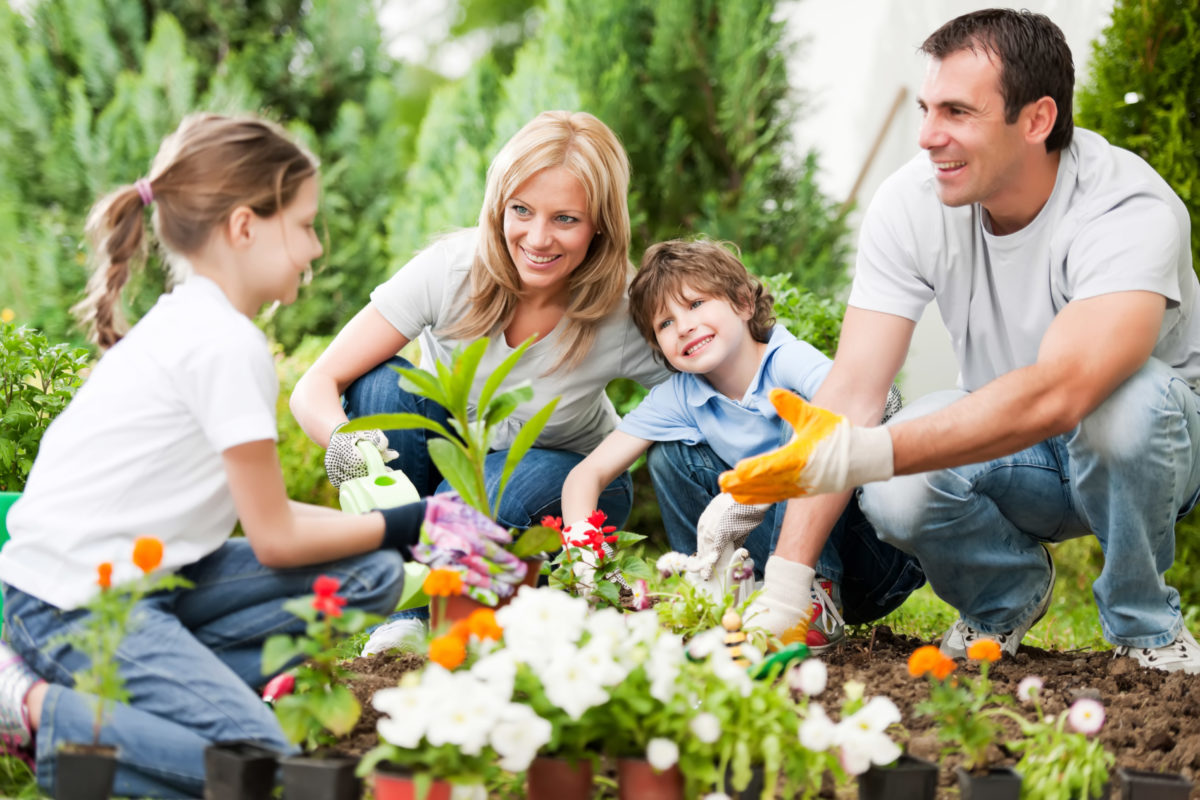Our family’s unexpected love of gardening began last spring when a friend gave me a large pot of flowers. When I brought it home, my 3½-year-old son was enthusiastic, careful, and nurturing. He wanted to know who planted them, how they got there, where the seeds were, how tall they were going to get, how much water they would need, how much sun was best, and on and on. But, like most projects, the plants were quickly forgotten and sadly, didn’t survive very far into spring.
It’s not like we don’t have good gardening genes. My mother nurtured about thirty rose bushes in her garden, and my mother-in-law has a knack for growing anything and everything. With my brown thumb, I’m lucky if I can keep hardy varieties like spider plants around for more than a few months.
Later that spring, my husband, a nature lover, briefly mentioned starting a garden. I expected it to be a passing phase. However, when he called a company to haul a half-ton of topsoil and some landscape timbers for the outline of our garden, I knew he was serious. My pre-school aged sons watched excitedly from the window as the dump truck emptied its load. And so began our family gardening adventure, as all three boys (my husband included) ran outside to shovel the dirt to prepare the garden. Here’s what we learned.
1. Involve kids from the beginning of the process.
Plan your garden ahead of time. Discuss and decide together what types of plants you will cultivate. Take your children to the store to buy the soil and pick out the seeds or seedlings. Need a new shovel or hoe? Have them help select those as well. Also, ensure that you have child-sized (and child-safe) counterparts on hand.
2. Start small.
Consider starting with a container garden, and sprouting from there. Depending on the time of year, seedlings might do the trick, although there are few things more magical to a child than that first glimpse of a sprout.
3. Think child-centered.
Based on their age and what will grow that time of year in your patch of sun (or shade), offer choices. Ask, “Do you want to grow eggplant or impatiens?” Let your child pick where to put the different plants. You might not know whether carrots or zinnias will pop up in that little corner, but that’s part of the fun!
4. Foster individual learning styles and interests.
Kids learn so much by engaging in activities that use all their senses. Gardening is a perfect match, with opportunities to encounter different textures, smells, sights and sounds. Also, consider your child’s learning style. Do your kids like to get dirty? Make it as multi-sensory as possible with them really getting into the dirt with their hands, feet, etc. Encourage them to touch and feel the soil, mud, water and plants. Are they active learners? Excavate and move earth with child-sized trucks, mini-tractors, wheelbarrows and wagons. Encourage your child to fill up large containers of water to haul to the garden. Build and decorate a garden bench or trellis together. Do they like to learn how things work? Discuss the growth process, read information on how quickly plants are expected to grow, how much water they need and general care. Create signs with symbols for plants that are sun lovers or thirsty plants. Also, learn about insects and other animals indigenous to your part of the planet.
5. Nurture frequently.
Check in with your garden often. Do one thing every day to help the plants thrive. Water, weed, talk to them, re-stake, or pick vegetables. Check on new growth, or check for the presence of friend or foe in the garden. As my son liked to say, “Let’s go pick a salad!”
6. Branch out.
Check out a friend’s garden to note similarities and differences. Share vegetables with neighbors. Visit Lewis Ginter Botanical Garden or your local garden center for a change of scenery and to expand your garden vision.
7. Save something for a rainy day.
On a day when you can’t be outside, make decorations for your garden with recycled materials. Design wind chimes and stepping stones. You might paint or design your own garden gnome or scarecrow! Or ask your youngster to draw a picture of some of the plants or write a story about their gardening experience.
8. Put the garden in a prominent place.
Admittedly, I was a little horrified when my husband picked a spot in our yard that was visible right when we pulled up in our driveway. But it was the best idea ever. It was the first thing we saw when we came home every day, which ensured it was tended often.
9. Prepare for next year’s garden.
Rake leaves, weed, prepare soil, consider composting and discuss next year’s plans. Try your hand at indoor container gardening or forcing bulbs. And when you need vegetables, visit your local farmer’s market to choose vegetables and fruit together as a family.
Most importantly, consider these memories that will last a lifetime. As we watched the eggplants bear fruit and ripen, my son excitedly said, “Soon, we will have eggs, and then the chickens will eat them.” We had an unforgettable chuckle. More than our garden flourished last year. It was a way for us to connect and learn together as a family. This year’s garden is well on its way.




